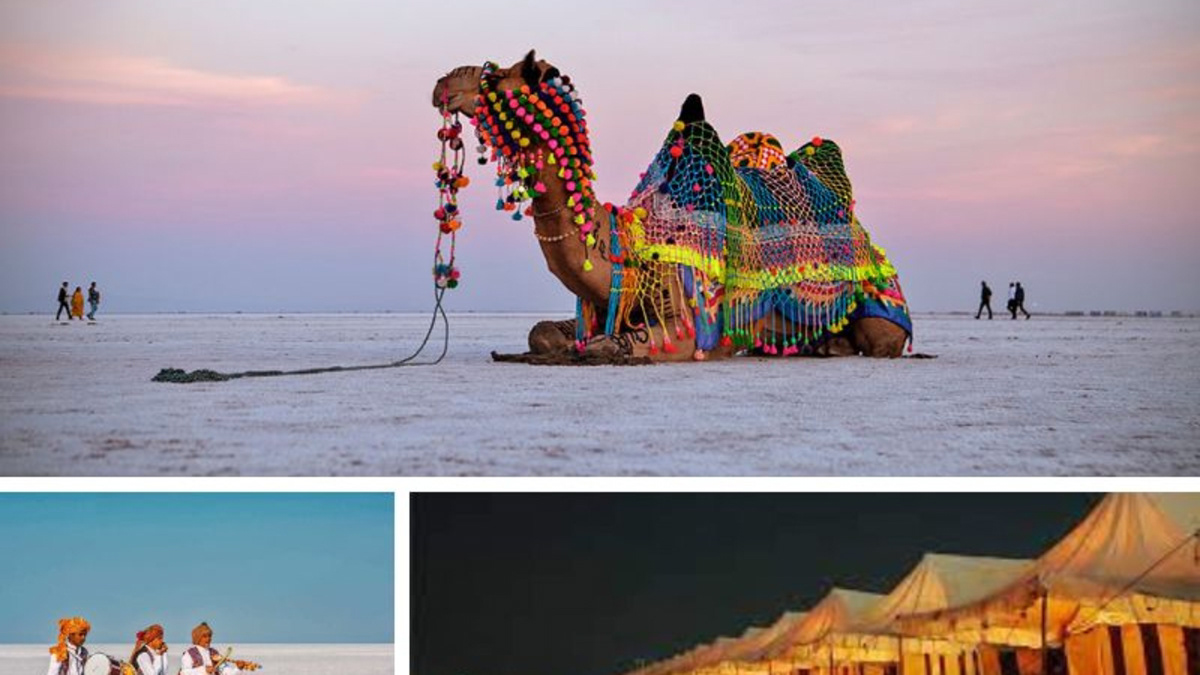
Gujarati (Kutch) Speciality
The scenic Maliya Bridge, which spans salt marshes often teeming with birds, creates an enticing impression of the gateway to Kachchh. Yes, this region is perhaps the least appealing in terms of climate, and it is certainly the least populated. It is well and truly off the beaten path. The various communities, such as Rabaris, Ahirs, and Meghwals, each have a distinct dress that is still an integral part of daily life, and each practice a specific craft, which is fostered and promoted by a number of co-operatives and non-governmental organizations. Kachchh offers some fascinating opportunities for adventurous, life-affirming travel for the adventurous traveler willing to forego such luxuries as hot showers and reliable bus schedules.
About Kachchh: The great and little Ranns, which flood seasonally, surround Kachchh. The Gulf of Kachchh, a large inlet of the Arabian Sea to the south, has a marine national park and sanctuary with 42 islands and a variety of reefs, mudflats, coastal salt marsh, and India’s largest area of mangrove swamps.
The Kachchh Peninsula is relatively high, with a thin layer of volcanic lava covering the often saline soil. There is little natural surface water on the dry and rocky terrain, but there are numerous artificial tanks and reservoirs. Intensive grazing has prevented the development of the rice vegetation typical of neighboring Sindh in Pakistan, and there is only sparse woodland along the frequently dry river beds. Some of the lakes serve as important wintering grounds for migratory birds such as pelicans and cormorants. In the north, the Rann of Kachchh disappears into the Thar desert.
The saltwater of the Gulf of Kachchh invades the Rann in June, and the Rajasthan River pours freshwater into it. It then transforms into an inland sea. Kachchh effectively becomes an island. When migratory Flamingos arrive near Khavda in December and February, they spend the winter on the Great Rann. Sand grouse, pelicans, and avocets are also present.
When the monsoons flooded vast areas of Kachchh, farming was forced to be abandoned, and handicrafts flourished, not only expressing artistic skills but also providing a means of subsistence. There is mirror work, Kachchh appliqué and embroidery with beads, gold and silver jewelry, gilding enameling, and colorful wool felt namda rugs.
Best Of Time: The best time to visit is between late October and mid-March. If the Rann of Kachchh and the desert wildlife sanctuary of the Great Rann were not separated by a road, they would form India’s largest contiguous tract of protected wildlife territory. The Rann is mostly a saline wilderness, broken up by belts of grass, bushes, acacia, and thorn scrub that form islands during the monsoon. The salt works, which clear the vegetation, release toxic effluents into the wetlands, and pollute the air, pose a serious threat to the area. Prosopis juliflora, a fast-growing thorn scrub, is destroying most other vegetation.
